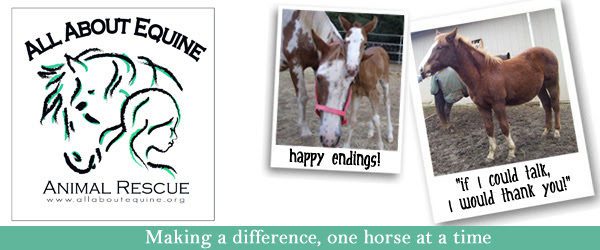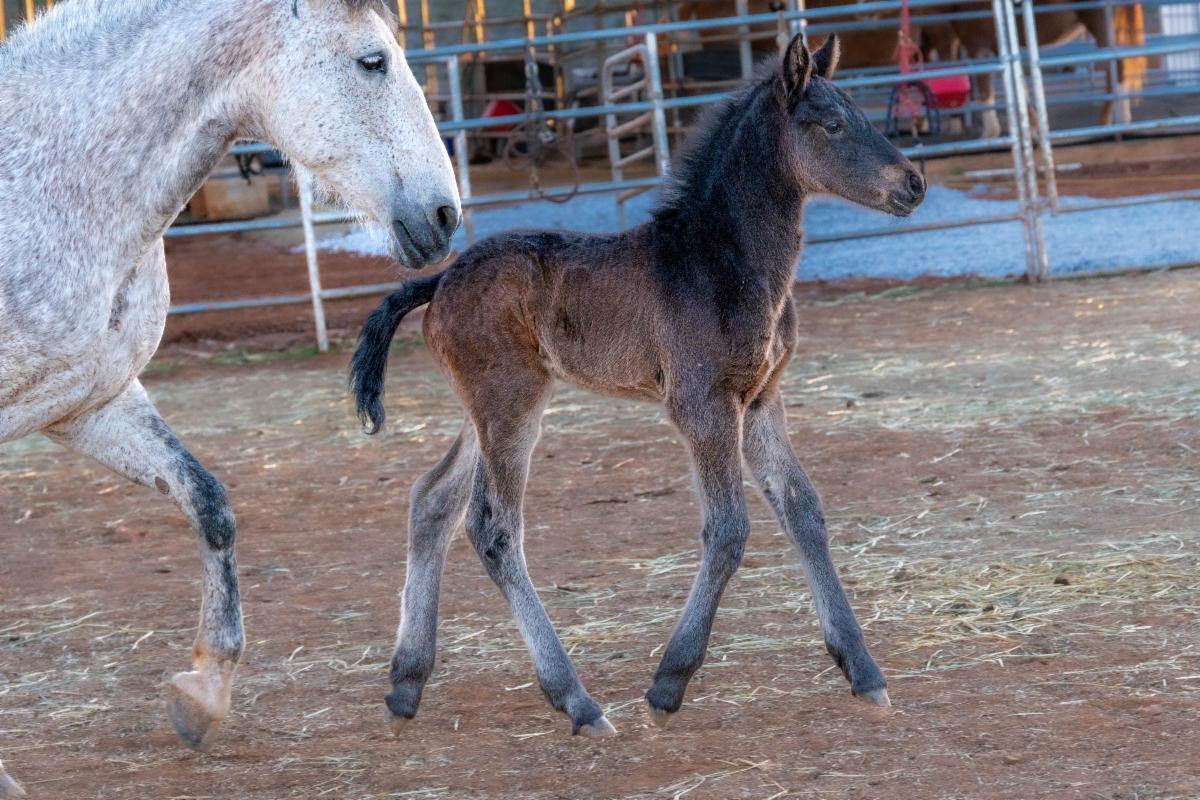What Will You Name Her?
The following is from All About Equine Animal Rescue:


This adorable baby girl was born at AAE on 2/22/22. She and mom are both happy and healthy. We’ve enjoyed watching them bond and seeing baby learn and grow over the past few weeks. (Read more about their story below.)
Baby girl doesn’t have a name yet because we’d like your help picking one for her!
We’re auctioning naming rights right now! You’ll be able to pick her name AND help cover some of her basic care costs.
If you’d like a chance at choosing her name, visit our Facebook page before this Sunday at 5pm to place your bid!
How It Works:
Bidding begins Wednesday, March 16 at 9am PT and closes Sunday, March 20 at 5pm PT.
Once the auction opens, the auction post will be pinned to the top of AAE’s Facebook page.
Comment the dollar amount you would like to bid. (Bidding starts at $10). Please do NOT include your name choice in the comments.
If you out bid someone, please tag them to let them know in the comment with your bid.
Highest bid at closing on March 20, 2022 at 5p wins! This person will be able to select Filly’s name. ***The name should follow AAE’s naming convention, which is a country artist inspired name, and it cannot be a name already used for a current or former AAE horse. AAE has final approval of the name.
We will contact the winner after the auction to finalize the name choice.
Baby Girl and Mama’s Story
In June 2021, we took in two reported pregnant mares as part of a nearby animal services case involving multiple animals. Shortly after arrival, our vet came for exams and ultrasounds. One showed a foal, the other did not. Dr. Stolba estimated mom-to-be was three to four months along, which meant baby was due in February or March. Fast-forward to February 22, 2022 (2/22/22), and mama gave birth to a beautiful filly!

Important information on the recent outbreak of
Equine herpesvirus myeloencephalopathy (EHM) in California
If you haven’t heard, there has been an outbreak of Equine Herpes Virus-1 (EHV-1) and Equine Herpesvirus Myeloencephalopathy (EHM, which is EHV-1 infection with neurological signs) in California.
If you have horses, are around horses, and/or volunteer at AAE, it’s important to understand how EHV can be transmitted and how to prevent the disease from spreading. See the following information shared from Loomis Basin Equine Medical Centers FB page:
Equine herpesvirus myeloencephalopathy (EHM) has been detected in multiple horses in several counties in California since February.
Equine herpesvirus causes respiratory disease, abortion, neonatal death, and the neurological disease EHM. It spreads in aerosolized secretions, by direct contact, and by contact with surfaces containing infected secretions. Shedding of the virus generally occurs for 7-10 days.
Horse owners must immediately isolate any horses exhibiting neurologic signs and consult their veterinarian; EHM has mandatory State reporting requirements. Owners must practice good biosecurity when they move horses in emergency situations or for veterinary care; avoid other horses and don’t share tack/equipment that hasn’t been properly cleaned and disinfected, including farrier and veterinary equipment.
Additional information on EHM, including updates on current EHV-1 cases and a map of affected areas, please visit the CA Animal Health Branch webpage. If you have any questions or concerns, please contact your vet.
Source: Loomis Basin Equine Medical Center
